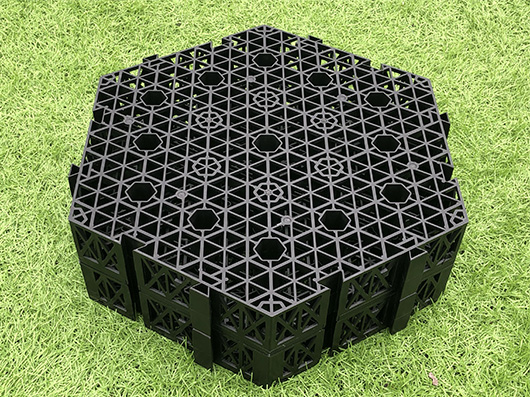Hard-working bees are the elves of nature, and the honeycombs they build with collective wisdom are representative works of nature.

The honeycomb structure is very compact, functional and material-saving. The hive is composed of countless cells of the same size. Each cell is a regular hexagon. And it is surrounded by other cells. There is only a wax wall between the two cells. The body of the bee is basically cylindrical, and the bee will neither have extra space nor did feel crowd in the chamber hole. The bottom of the chamber hole is neither flat nor round, but pointed. This bottom is composed of three identical rhombuses. Someone has measured the angles of a rhombus, and both obtuse angles are 109° and both acute angles are 70°. It is amazing that all bee hives in the world are built according to this unified angle and pattern.
The ancient Greek philosopher Pappers believed that bees are endowed with “a certain geometric foresight”. But what about the source of wisdom, is it God? William Kirby said in 1852 that “bees are mathematicians taught by the gods”. Grafissimo/Getty also said: Bees seem to have evolved the ability to use the soft wax they secrete to build perfectly hexagonal cells. However, some researchers believe that the uniform tension on the surface of the soft wax causes it to shrink into a shape with minimal area, like the fission bubbles on a bubble raft.
Biologists believe that all hives in the world have such delicate features and are built according to this standard, mainly because the formation and growth of natural objects are affected by the surrounding space and materials. Therefore, in order to better adapt to the natural environment, save construction materials, etc., bees choose hexagons as the basic structure to build honeycombs.
What are the characteristics of the hexagon that make nature favor it again and again?
The formation and growth of natural objects are influenced by the surrounding space and materials. A regular hexagon is one of three regular polygons (hexagons, squares, and regular triangles) that can tile a plane without overlapping. Of the three regular polygons, the hexagon occupies the largest area with the smallest amount of material.
Another feature of a regular hexagon is that it has six axes of symmetry. Therefore it can undergo various rotations without changing its shape. The sphere, which encloses the largest volume with the smallest surface area, is also associated with the hexagon. When balls are placed next to each other in a box, each enclosed ball is tangent to the other six balls. When we draw some line segments passing through the tangent points between these balls, the figure circumscribed on the balls is exactly a regular hexagon.
The most special figure among hexagons is a regular hexagon. We call a polygon with six equal sides and six equal interior angles a regular hexagon. According to the sum of the exterior angles of a hexagon is equal to 360 degrees, then its interior angles are equal, and an interior angle is 180-(360/6)=120 degrees, so each interior angle of a regular hexagon is 120 degrees.
Applications of the honeycomb structure
The structure of the hive has aroused great interest of scientists. After in-depth research on the honeycomb, scientists have developed materials with a honeycomb structure, which can be used in various occasions in engineering applications. On land, we can see off-road vehicles equipped with honeycomb structure tires. In the sky, airplanes are equipped with noise-absorbing materials with honeycomb structure which makes our journey more comfortable. Honeycomb structure is also widely used in the construction industry.
From a mathematical point of view, use non-overlapping polygons to completely cover a part of the plane. Then use one or several plane figures with the same shape and size to splice them together. In this way, there are no gaps between each other. It forms one piece without overlapping, which is the dense tiling of planar graphics. This type of problem is usually called planar tessellation with polygons.
In real life, we have seen regular polygons or irregular basic figures assembled into various patterns to make our lives colorful. This is one of the most classic examples of using mathematics to beautify our lives.
Advantages of the honeycomb structure
The main advantages of the honeycomb structure are: strong bearing capacity, compact structure, applicable and material saving. The hexagonal nest made by bees can disperse and bear external forces from all sides, due to the arrangement of multiple walls and a series of continuous honeycomb-shaped mesh structures. It makes the honeycomb structure more resistant to extrusion than any round shape or square. Scientists’ research on the honeycomb structure has found that even a very thin material can withstand a lot of pressure as long as it is made into a honeycomb shape.
HOENSOEY Cells- the solution for stormwater drainage with the use of honeycomb structure

As the core of the sustainable stormwater management system, the shape of HOENSOEY Cellular Storage is honeycomb. It is truly advanced and capable of bearing high loads.
As the modern, innovative and environmentally-friendly products, HOENSOEY Stormwater Modules help a lot in reducing the impact of “urban heat island effect”. At the same time, they create a wonderful natural landscape and beautify the urban environment.
Visit the site to learn more about HOENSOEY Cells. < https://www.hoensoey.com/>
